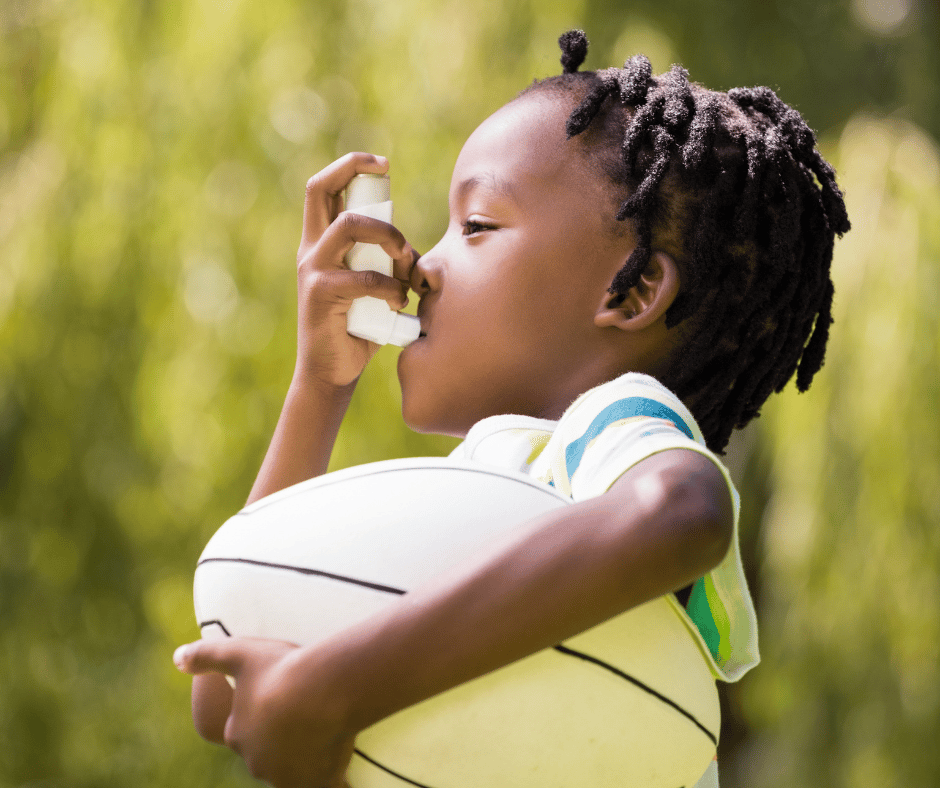Summertime is here! The trees finally have leaves, flowers are in full bloom and the lawns are green. Those summer activities are in full swing, like trips to the park or the lake, ballgames, a nice bicycle ride and camping. For some individuals this time of year can be troublesome. You want to be outside and enjoy all of those activities but it may cause you to have problems with your breathing. Who wants to deal with all of that? With a little bit of planning and possibly an action plan from your physician, everyone can enjoy their summer activities.

Exercise Induced Bronchoconstriction (EIB), formerly known as Exercised Induced Asthma, is airflow obstruction, or narrowing of the airways in the lungs, that occurs because of exercise. Symptoms normally don’t start right away with exercise but you may notice symptoms during exercise and up to 5-10 minutes after stopping exercise. They will most often resolve in 20-30 minutes. Up to 90% of people who have Asthma will experience symptoms of Exercised Induced Bronchoconstriction during exercise. In adolescents and young adults, this may be the most common cause of asthma symptoms.
Common symptoms of Exercise Induced Bronchoconstriction are:
- Coughing *most common symptom and may be the only symptom*
- Wheezing
- Chest tightness
- Shortness of breath
During exercise it is common for a person to breathe through their mouth and usually faster and deeper than normal. Mouth breathing is a dryer, cooler breath compared to breathing through your nose where the nasal mucosa will provide a warmer, moist breath. This dry, cool air being breathed in with exercise can trigger bronchoconstriction, or the narrowing of the airways.
Important things to consider when exercising with Asthma, or Exercised Induced Bronchoconstriction are:
- Warm-up before exercising and cool-down when finished with exercise. This will help in avoiding sudden temperature changes in the airways.
- Using medication such as a quick-relief rescue inhaler may help to prevent bronchospasm and relax the muscles in the airways. The medication can be taken 10-15 minutes prior to exercise to help prevent symptoms or be taken after exercise to alleviate any exercise induced symptoms that have occurred. Always follow specific physician orders when taking medications.
- Stay hydrated by drinking plenty of fluids during exercise. Do not wait until you are dehydrated before drinking fluids
- Check your environment before exercising. Is the air quality good? Is the temperature too warm or too cold? Know your environmental triggers so you can avoid any breathing difficulties while enjoying your activities.
- Always remember to pace yourself.
Better activities for people with Exercise Induced Bronchoconstriction may include:
- Swimming in an indoor pool provides a more humid and warm environment.
- Short burst activities such as baseball, volleyball or golf.
- Yoga, walking, leisure biking or hiking are activities that are not fast and strenuous.
What is the difference between Asthma and Exercise Induced Bronchoconstriction?
Asthma is a chronic respiratory condition that causes inflammation in the airways. This may cause periodic and reversible obstruction to airflow usually in response to an allergen, a chemical irritant, an infection or physical stimuli such as cold air or exercise.
Exercise Induced Bronchoconstriction causes the bronchial tubes in the lungs to narrow during physical activity. This may cause coughing, wheezing and difficulty breathing. This condition can affect people with and without regular asthma.
Learning to manage your Asthma or symptoms from Exercise Induced Bronchoconstriction will allow you to continue to enjoy those outdoor activities you like to do. Whether it is just knowing what types of things may cause your airways to be irritated (different smells, time of day, weather) or taking precautions such as covering your nose/mouth with a scarf or mask when in cold, dry weather can make your exercise time more pleasant.
If your child has signs and symptoms of Exercise Induced Bronchoconstriction having an action plan will allow for safe participation in activities. Inform your child’s teachers and coaches of the action plan so an adult can help monitor for symptoms. This will allow your child to still be able to enjoy activities with other children. If appropriate your child can always pre-medicate prior to activities with a rescue inhaler, providing it is part of a prescribed physician plan.
Exercise Induced Bronchoconstriction or Asthma should not need to stop you from enjoying all of your upcoming summertime activities. Visit with your healthcare provider and make a plan to keep you safe and active. If you have questions about breathing concerns or would like to learn about Respiratory Services at Windom Area Health, call 507-831-0647
Enjoy your summer!
By Rhonda Wahl, Respiratory Therapy Coordinator
